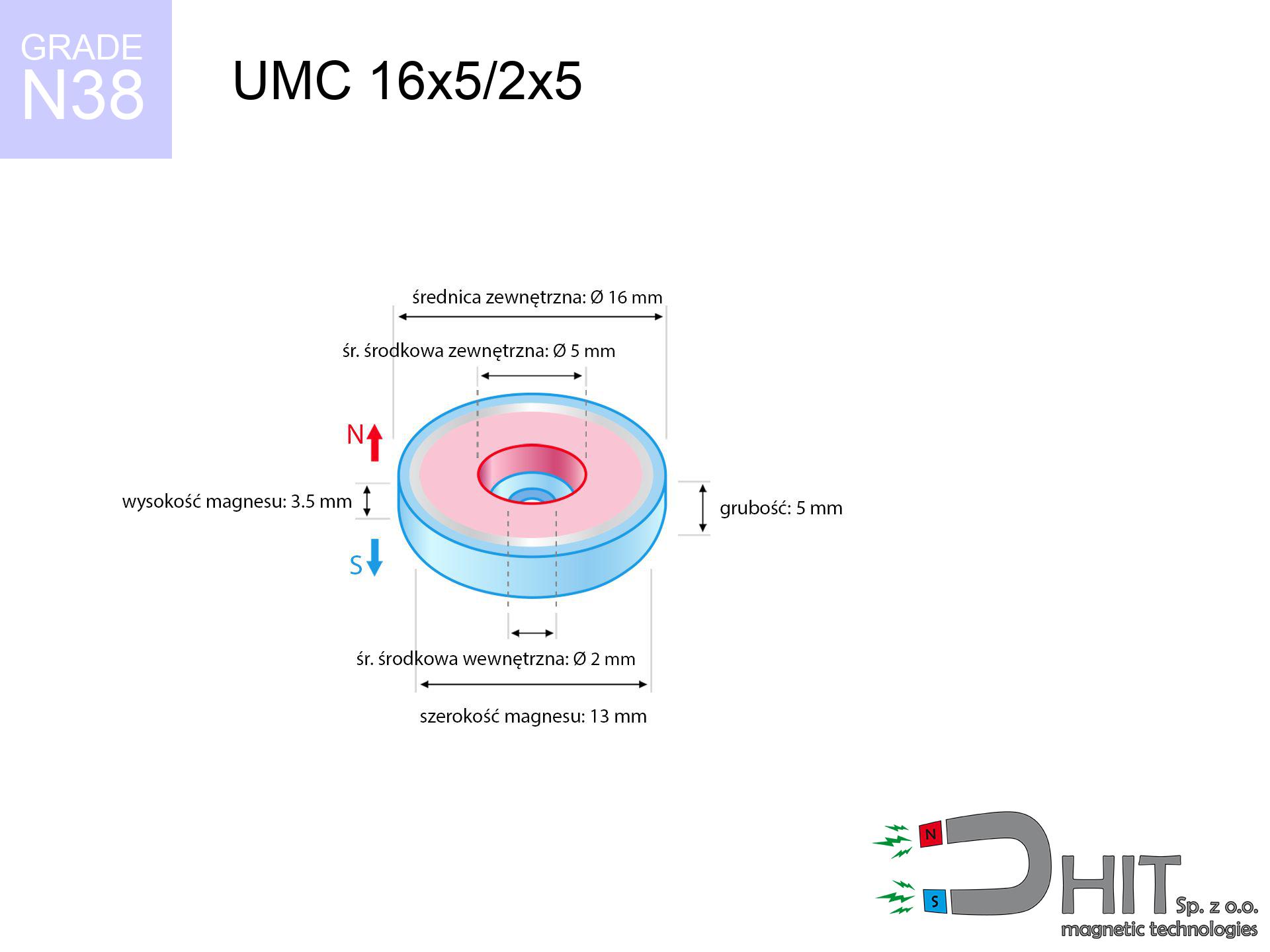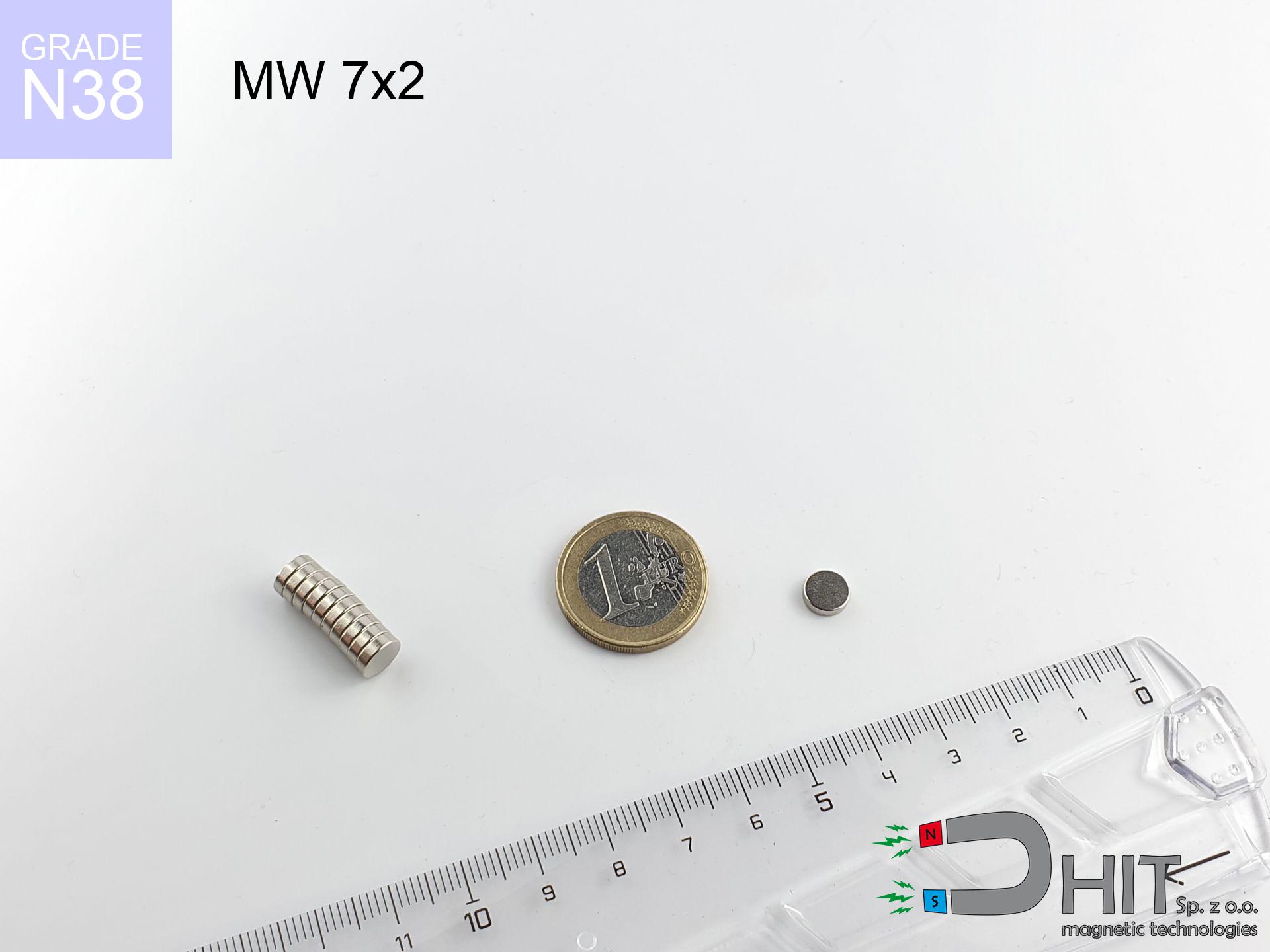UMP 75x25 [M10x3] GW F200 GOLD / N42 - search holder
search holder
Catalog no 210421
GTIN/EAN: 5906301814061
Diameter Ø
75 mm [±1 mm]
Height
25 mm [±1 mm]
Weight
900 g
Load capacity
310.00 kg / 3040.06 N
Coating
[NiCuNi] Nickel
Magnetic Flux
~ 8 000 Gauss [±5%]
150.00 ZŁ with VAT / pcs + price for transport
121.95 ZŁ net + 23% VAT / pcs
bulk discounts:
Need more?Looking for a better price?
Call us now
+48 888 99 98 98
alternatively contact us via
our online form
the contact page.
Parameters as well as form of neodymium magnets can be checked with our
our magnetic calculator.
Orders placed before 14:00 will be shipped the same business day.
💡 Guide: How to choose a decent magnet and not get ripped off?
Instead of believing fairy tales on YouTube with tests on uncertified equipment, see what really determines your magnet's power:
- 📏 Magnet thickness in the casing (min. 10mm) – This is what matters most! Thin magnets are weak. Thanks to the 1cm thickness of N52 neodymium, your magnet "sees" metal even through thick rust and mud.
- 🛡️ Armored protection (Black Epoxy) – Forget about rust. This coating doesn't chip when hitting rocks and protects the magnet in water much better than regular nickel, which fails quickly.
- 🧲 Eyelets that don't steal power – Made of special non-magnetic steel, so they don't stick to the magnet and don't block the force. Important: mount only one eyelet at a time! Using 3 at once is a mistake that weakens the magnet.
- 🧶 Certified rope (min. 8mm) – You gain the certainty that your gear won't stay at the bottom. It's thick and comfortable, so it doesn't cut your fingers when pulling out heavy scrap metal.
- 🚀 Our advantage: We are the only ones combining the strongest N52 neodymium (10mm thick) with non-magnetic eyelets. This is real power and durability you won't find anywhere else.
Invest in solid equipment and enjoy the results!
UMP 75x25 [M10x3] GW F200 GOLD / N42 - search holder
Specification / characteristics UMP 75x25 [M10x3] GW F200 GOLD / N42 - search holder
| properties | values |
|---|---|
| Cat. no. | 210421 |
| GTIN/EAN | 5906301814061 |
| Production/Distribution | Dhit sp. z o.o. |
| Country of origin | Poland / China / Germany |
| Customs code | 85059029 |
| Diameter Ø | 75 mm [±1 mm] |
| Height | 25 mm [±1 mm] |
| Weight | 900 g |
| Load capacity ~ ? | 310.00 kg / 3040.06 N |
| Coating | [NiCuNi] Nickel |
| Series | GOLD |
| Holder Type | 2 sided |
| Material Type | Structural steel S235 (ferrous) |
| Magnetic Flux | ~ 8 000 Gauss [±5%] |
| Size/Mount Quantity | 3xM10 |
| Manufacturing Tolerance | ±1 mm |
Magnetic properties of material N42
| properties | values | units |
|---|---|---|
| remenance Br [min. - max.] ? | 12.9-13.2 | kGs |
| remenance Br [min. - max.] ? | 1290-1320 | mT |
| coercivity bHc ? | 10.8-12.0 | kOe |
| coercivity bHc ? | 860-955 | kA/m |
| actual internal force iHc | ≥ 12 | kOe |
| actual internal force iHc | ≥ 955 | kA/m |
| energy density [min. - max.] ? | 40-42 | BH max MGOe |
| energy density [min. - max.] ? | 318-334 | BH max KJ/m |
| max. temperature ? | ≤ 80 | °C |
Physical properties of sintered neodymium magnets Nd2Fe14B at 20°C
| properties | values | units |
|---|---|---|
| Vickers hardness | ≥550 | Hv |
| Density | ≥7.4 | g/cm3 |
| Curie Temperature TC | 312 - 380 | °C |
| Curie Temperature TF | 593 - 716 | °F |
| Specific resistance | 150 | μΩ⋅cm |
| Bending strength | 250 | MPa |
| Compressive strength | 1000~1100 | MPa |
| Thermal expansion parallel (∥) to orientation (M) | (3-4) x 10-6 | °C-1 |
| Thermal expansion perpendicular (⊥) to orientation (M) | -(1-3) x 10-6 | °C-1 |
| Young's modulus | 1.7 x 104 | kg/mm² |
Material specification
| iron (Fe) | 64% – 68% |
| neodymium (Nd) | 29% – 32% |
| boron (B) | 1.1% – 1.2% |
| dysprosium (Dy) | 0.5% – 2.0% |
| coating (Ni-Cu-Ni) | < 0.05% |
Environmental data
| recyclability (EoL) | 100% |
| recycled raw materials | ~10% (pre-cons) |
| carbon footprint | low / zredukowany |
| waste code (EWC) | 16 02 16 |
See also offers
Advantages as well as disadvantages of neodymium magnets.
Strengths
- They have unchanged lifting capacity, and over more than 10 years their performance decreases symbolically – ~1% (in testing),
- Neodymium magnets prove to be extremely resistant to loss of magnetic properties caused by magnetic disturbances,
- By covering with a shiny layer of nickel, the element presents an nice look,
- Magnetic induction on the top side of the magnet is maximum,
- Thanks to resistance to high temperature, they can operate (depending on the shape) even at temperatures up to 230°C and higher...
- Thanks to the option of free forming and adaptation to individualized needs, neodymium magnets can be modeled in a wide range of shapes and sizes, which makes them more universal,
- Versatile presence in future technologies – they are used in mass storage devices, electromotive mechanisms, diagnostic systems, and complex engineering applications.
- Relatively small size with high pulling force – neodymium magnets offer impressive pulling force in compact dimensions, which makes them useful in small systems
Disadvantages
- At strong impacts they can break, therefore we recommend placing them in steel cases. A metal housing provides additional protection against damage and increases the magnet's durability.
- NdFeB magnets demagnetize when exposed to high temperatures. After reaching 80°C, many of them experience permanent weakening of strength (a factor is the shape as well as dimensions of the magnet). We offer magnets specially adapted to work at temperatures up to 230°C marked [AH], which are very resistant to heat
- They oxidize in a humid environment - during use outdoors we recommend using waterproof magnets e.g. in rubber, plastic
- Limited possibility of producing threads in the magnet and complex shapes - preferred is cover - magnetic holder.
- Potential hazard to health – tiny shards of magnets pose a threat, in case of ingestion, which becomes key in the aspect of protecting the youngest. Furthermore, small elements of these devices can be problematic in diagnostics medical when they are in the body.
- Higher cost of purchase is a significant factor to consider compared to ceramic magnets, especially in budget applications
Pull force analysis
Maximum lifting force for a neodymium magnet – what contributes to it?
- using a plate made of mild steel, acting as a circuit closing element
- whose transverse dimension reaches at least 10 mm
- with an ground contact surface
- without the slightest air gap between the magnet and steel
- for force applied at a right angle (pull-off, not shear)
- at temperature room level
Lifting capacity in practice – influencing factors
- Clearance – existence of foreign body (paint, dirt, air) interrupts the magnetic circuit, which reduces power steeply (even by 50% at 0.5 mm).
- Load vector – maximum parameter is reached only during perpendicular pulling. The resistance to sliding of the magnet along the surface is standardly many times smaller (approx. 1/5 of the lifting capacity).
- Substrate thickness – to utilize 100% power, the steel must be sufficiently thick. Paper-thin metal limits the attraction force (the magnet "punches through" it).
- Material composition – not every steel attracts identically. High carbon content worsen the attraction effect.
- Surface finish – full contact is possible only on smooth steel. Rough texture create air cushions, weakening the magnet.
- Thermal environment – heating the magnet causes a temporary drop of induction. Check the thermal limit for a given model.
Lifting capacity was determined with the use of a smooth steel plate of optimal thickness (min. 20 mm), under vertically applied force, whereas under parallel forces the holding force is lower. Additionally, even a small distance between the magnet’s surface and the plate lowers the holding force.
Serious injuries
Big blocks can break fingers instantly. Do not put your hand between two attracting surfaces.
Do not overheat magnets
Do not overheat. NdFeB magnets are sensitive to heat. If you require resistance above 80°C, ask us about special high-temperature series (H, SH, UH).
This is not a toy
Product intended for adults. Small elements pose a choking risk, leading to severe trauma. Store away from kids and pets.
Eye protection
Beware of splinters. Magnets can fracture upon violent connection, launching sharp fragments into the air. We recommend safety glasses.
Pacemakers
People with a pacemaker must maintain an safe separation from magnets. The magnetic field can stop the operation of the life-saving device.
Electronic devices
Device Safety: Strong magnets can damage data carriers and sensitive devices (heart implants, medical aids, timepieces).
Precision electronics
An intense magnetic field disrupts the functioning of compasses in smartphones and GPS navigation. Do not bring magnets near a smartphone to prevent breaking the sensors.
Sensitization to coating
It is widely known that the nickel plating (standard magnet coating) is a common allergen. If your skin reacts to metals, refrain from direct skin contact or select coated magnets.
Powerful field
Use magnets with awareness. Their immense force can shock even experienced users. Plan your moves and respect their force.
Flammability
Powder generated during cutting of magnets is self-igniting. Do not drill into magnets unless you are an expert.

![Search magnet UMP 75x25 [M10x3] GW F200 GOLD / N42 - GOLD Series Search magnet UMP 75x25 [M10x3] GW F200 GOLD / N42 - GOLD Series](https://cdn3.dhit.pl/graphics/banners/magnet.webp)
![UMP 75x25 [M10x3] GW F200 GOLD / N42 - search holder](https://cdn3.dhit.pl/graphics/products/ump-75x25-m10x3-gw-f200-gold-pag.jpg)
![UMP 75x25 [M10x3] GW F200 GOLD / N42 - search holder - ujęcie 2](https://cdn3.dhit.pl/graphics/products/ump-75x25-m10x3-gw-f200-gold-voj.jpg)

![BM 450x180x70 [4x M8] - magnetic beam BM 450x180x70 [4x M8] - magnetic beam](https://cdn3.dhit.pl/graphics/products/bm-450x180x70-4x-m8-duh.jpg)
![SM 32x350 [2xM8] / N52 - magnetic separator SM 32x350 [2xM8] / N52 - magnetic separator](https://cdn3.dhit.pl/graphics/products/sm-32x350-2xm8-fag.jpg)


